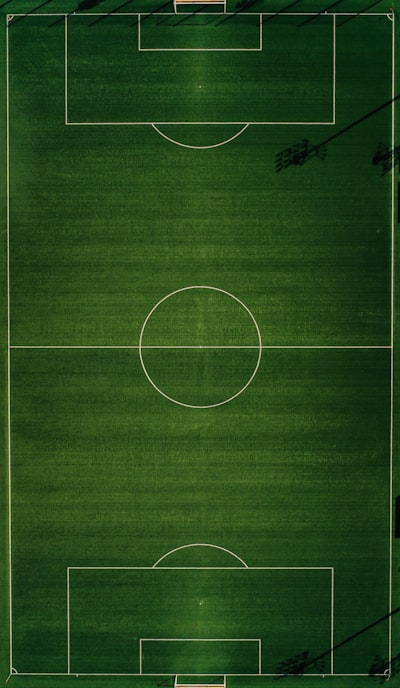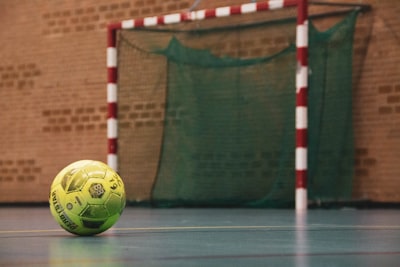Futsal and soccer are two of the most beautiful games in the world. While they may look similar, there are some key differences between futsal vs soccer. Understanding these differences and similarities can help you decide which sport is right for you.
DIFFERENCES BETWEEN SOCCER AND FUTSAL
One of the main differences is the size of the field. Futsal is usually played on a smaller court, around 30×20 meters, while soccer is played on a larger field, typically around 100×64 meters.
This smaller field size in futsal means that players have less space to work with and must be more precise and accurate in their movements.

The contrast between futsal and soccer is also evident in the number of players on the pitch. Futsal usually involves five players per side, while soccer has eleven. This reduced number of participants in futsal necessitates that each player cover more ground and put in extra effort to generate scoring chances.
In terms of gear, both sports also have some distinctions. Futsal is played with a smaller, denser futsal ball crafted to rebound less on a hard surface such as turf or concrete.
This makes the game more difficult and necessitates that players be more adept at manipulating the ball. Futsal is usually played indoors, while soccer is generally played on grass.
A SUMMARY OF FUTSAL’S HISTORY
Futsal is a relatively new sport, invented in Uruguay in the 1930s. The sport was created as a way for soccer players to practice and improve their skills during the off-season. The name futsal is a combination of the words “futebol” (soccer) and “sala” (hall), as the sport was originally played indoors.
Over time, futsal has spread worldwide and become a popular sport in its own right. It is now governed by FIFA and is played in many countries, from South America to Europe to Asia.
BALL AND PITCH
One of the defining characteristics of futsal is the size of the futsal court. A standard futsal court is approximately 30×20 meters, significantly smaller than a standard soccer field. The smaller field size in futsal means that players have less space to work with and must be more precise and accurate in their movements.

A key feature of futsal is the size of the court. Generally, a futsal court is around 30×20 meters, much smaller than a regular soccer field. This limited space requires players to be more exact in their movements.
The futsal ball used in futsal is also different from a standard soccer ball. A futsal ball is smaller, heavier, and made with a different material. This ball is designed to have less bounce on the hard surface, which makes the game more challenging and requires players to be more skilled in controlling the ball.
RULES
In terms of rules, futsal also has some key differences from soccer. One of the most notable differences is that futsal has a time limit for ball possession by an individual player, usually 4 seconds in most countries. In soccer, players can hold the ball for as long as they like.

Another significant distinction is that when the ball goes out of bounds in futsal, the goalkeeper or other players kick the ball back into play. This rule encourages more skillful play, as players cannot simply boot the ball down the field.
Futsal also has a different system for substitutions. In soccer, teams can make unlimited substitutions, but in futsal, teams are limited to a certain number of substitutions per game. This rule allows for more continuity in the game and encourages teams to play their best players for longer periods.
In addition to these differences, there are also similarities between the rules of both. Both sports award free kicks for fouls, have offside rules, and use a similar scoring system.
Futsal Rules Challenges
Futsal has different rules from outdoor soccer, which can be challenging for players and coaches to adapt to. One of the main challenges is the time limit on ball possession, which requires players to be more precise and efficient with their movements.
Another challenge is the need for throw-ins, which requires players to be more skilled in passing and ball control.
Coaching Futsal
Coaching futsal requires a different set of skills than coaching outdoor soccer. Coaches need to adapt to the limited space and hard surfaces common in futsal arenas and work with the unique rules and style of play.
Futsal coaches should also be aware of the game’s physical demands and ensure that their players are fit enough to compete at a high level. They should also be prepared to adjust their tactics depending on their opponents.
Futsal Practice Facilities
Futsal practice facilities should be similar to those used for indoor soccer and basketball, with hardwood or concrete floors and high ceilings. It’s ideal to look for facilities with a regulation-size futsal court and good lighting.
The ideal futsal facility should also have a good playing surface, such as rubberized or artificial turf. It should also have adequate space for spectators and teams to warm up and cool down. The facility should also be well-maintained and have the necessary safety equipment, such as nets and goalposts.
Futsal and indoor soccer?
It ultimately depends on the players’ and teams’ personal preferences, skills, and goals. Futsal is considered a more skillful and technical game, emphasizing ball control and precision.
Indoor soccer, on the other hand, is a faster-paced and high-energy version of the game, emphasizing speed and athleticism. Both sports have their own unique set of challenges and benefits, and players and teams can choose which one suits them better.
Is futsal playing good for soccer?
Futsal is considered an excellent training tool for soccer players. The smaller field size, limited space, and heavier futsal ball in futsal force players to develop their technical skills, ball control, and accuracy.
I Played in a PRO FUTSAL MATCH – Video
Playing futsal also helps players improve their decision-making skills and quickness of thought. As futsal emphasizes ball control, shorter passes, and quick ball movement, it helps players adapt to similar conditions on the soccer field.
Futsal vs Soccer A Hybrid Approach.
Mixing futsal and indoor soccer elements can be a great way to reap both benefits. Players and teams can become more comprehensive and flexible by blending futsal’s technical proficiency and accuracy with the speed and physicality of indoor soccer. This can also give players a more diverse and demanding practice routine to help them develop in different facets of the game.

To sum up, futsal and soccer are comparable sports with many commonalities and distinctions. Futsal is a more exact, accurate, and proficient version of the game, while indoor soccer is a quicker-paced, high-energy variation.
Both sports offer distinct advantages, and players and teams can decide which. Futsal is also a great training aid for soccer players, refining their technical abilities and precision. Consequently, coaches and athletes can utilize a combined approach to incorporate futsal and indoor soccer to become more comprehensive and flexible.


